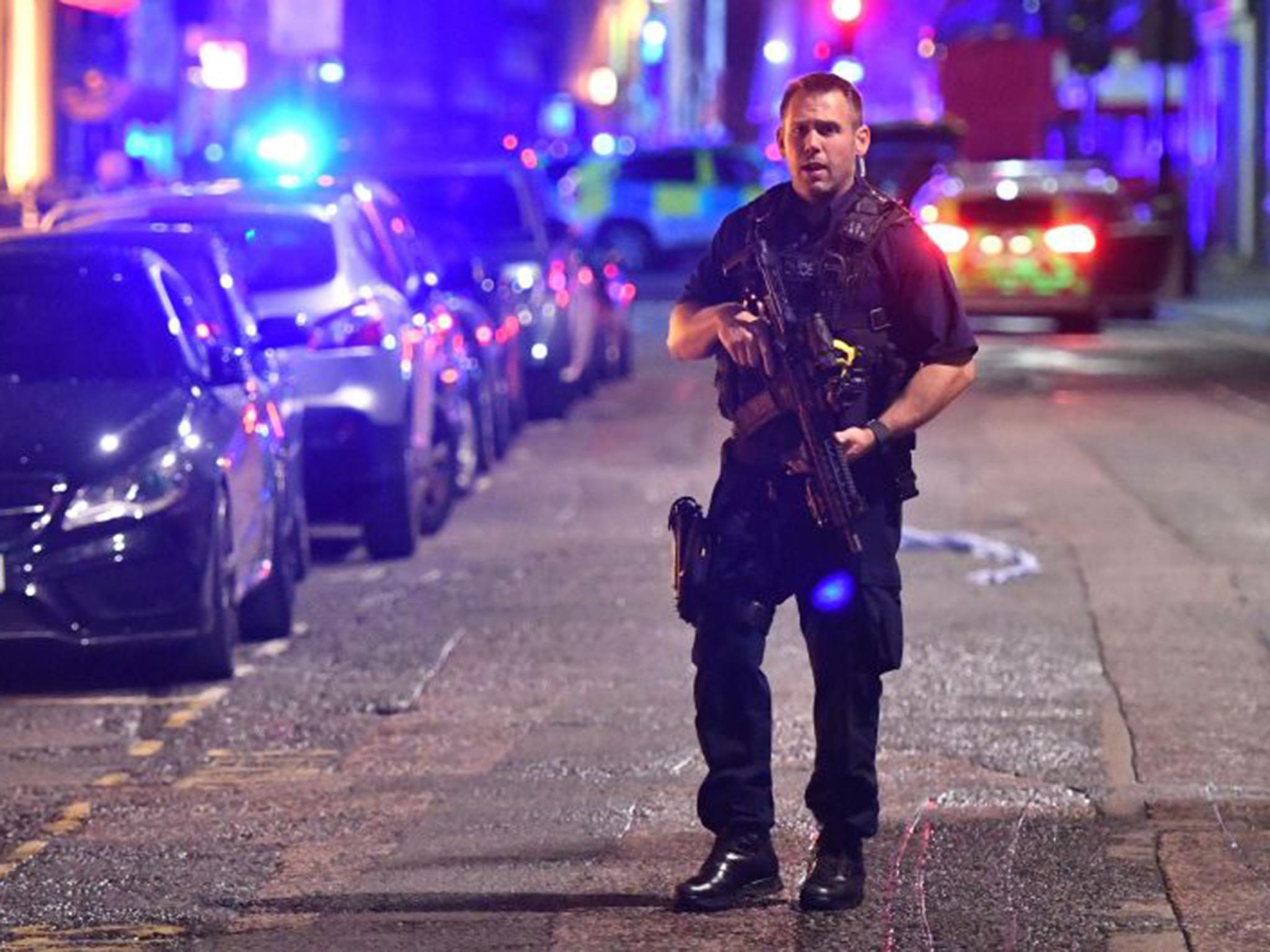London Bridge attack: Officials took ‘too long’ to let paramedics treat victims at scene, ambulance boss admits
Paramedics did not enter courtyard where five victims died until three hours after attack, inquest hears

Authorities took “too long” to let paramedics help victims of the London Bridge attack as they lay bleeding on the ground, a senior official has admitted.
Inquests into the deaths of eight victims heard armed police officers initially stopped medics entering a courtyard where five people were stabbed to death due to reports of shots being fired nearby.
The London Ambulance Service (LAS) knew there were victims inside but could not enter the area because Borough Market had been designated a “hot zone”.
“Two groups of people were aware of casualties potentially requiring urgent treatment in the general area of the Boro Bistro courtyard,” Jonathan Hough QC, counsel to the inquests, told the Old Bailey.
“Neither of those groups got the message to the people in the courtyard that ambulance staff couldn’t get to them.”
Gareth Patterson QC, representing the families of six victims, said paramedics had not entered the courtyard area until after 1am, despite the attackers being shot dead by armed police at 10.16pm.
Paul Woodrow, director of operations at the LAS, admitted it took “too long” to make a decision to commit specialist teams to treat patients at the scene.
Giving evidence on Monday, Mr Woodrow said the service initially struggled to get “overall situational awareness” after the van and knife attack, which spanned London Bridge, Borough High Street and Borough Market.
The inquests previously heard witnesses called 999 to report attacks in different locations simultaneously, with some believing the van ramming to be an accident and running towards the crash to help.
People gave different descriptions of the attackers, who took off their jackets during the stabbing rampage, and their appearance in multiple locations sparked fears more terrorists were at large after the three culprits were shot dead.
The inquest has heard how police were calling for help and trying to update each other, but their radio communications were unintelligible because of multiple officers using an emergency frequency.
Mr Woodrow spoke of “confusion” and “issues around communication” in the immediate aftermath of the attack on 3 June, 2017.
“It hindered our ability, jointly, to get full situational awareness on that situation,” he said.
“In the very early stages of these incidents, they really are chaotic, and it’s just a fact that we do not have an army of people there to filter the information.”

Mr Woodrow said emergency service workers were receiving information covering multiple locations within a wide area, which some staff “would not have an intimate knowledge of”.
But he admitted it “took too long to make a decision to commit” specially trained ambulance intervention teams, made up of ambulance, fire brigade and armed officers, to search for victims.
Despite calls for help, police officers aiding the injured in the courtyard were not told about the presence of ambulance resources on Borough High Street, Mr Patterson told the inquest.
“There was clearly a breakdown in communications at that stage,” Mr Woodrow conceded.
He said the Borough Market area had been deemed unsafe, with a “hot zone” established by police to limit access, but Mr Patterson said there was no evidence the Boro Bistro courtyard was included.
The inquest heard that under normal procedures, ambulance crews would never enter a hot zone, but the rules were broken to send in volunteers on the night of the attack.
Mr Woodrow said medics working in “really difficult circumstances” had done “really good work” treating victims and praised those who volunteered to enter the potentially dangerous area.
“I’m proud of my staff who put themselves in harm’s way,” he said. “It does take time for command structures to be put into place, what we need to recognise is ways we can reduce those delays.”
The inquest heard the LAS received 134 calls over the London Bridge attack, on top of 4,400 already received from other incidents on a busy Saturday.

Mr Woodrow admitted the ambulance service struggled to coordinate the flow of conflicting information from London Bridge.
“It’s a difficult problem and this has brought it into stark view, but it’s not a problem that is easily resolved,” he said.
“It’s just not realistic to expect that we can get 100 to 150 people into an area in the first 10 minutes of an incident.”
Mr Woodrow told the court the LAS was committed to improving the deployment of officers trained for a marauding terror attack in major incidents and how it handles responses to dangerous situations.
He argued there might be a need for specially trained ambulance staff to be permanently based with police and fire service colleagues and a better use of technology to locate victims.
Inaccurate reports of an “active shooter” also delayed the emergency response to the Manchester bombing that killed 22 people under two weeks before the London Bridge attack.
An independent review found poor communication and policies meant first-aid trained firefighters did not respond for two hours and only three paramedics entered the “hot zone” where the bomb exploded.
Eight victims were killed in the London Bridge attack, which lasted less than 10 minutes.
The inquest into their deaths will be followed by a separate inquest heard by a jury into the deaths of the three attackers.
Additional reporting by PA
Join our commenting forum
Join thought-provoking conversations, follow other Independent readers and see their replies
Comments